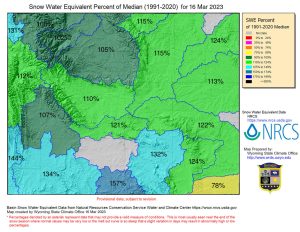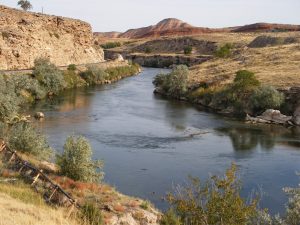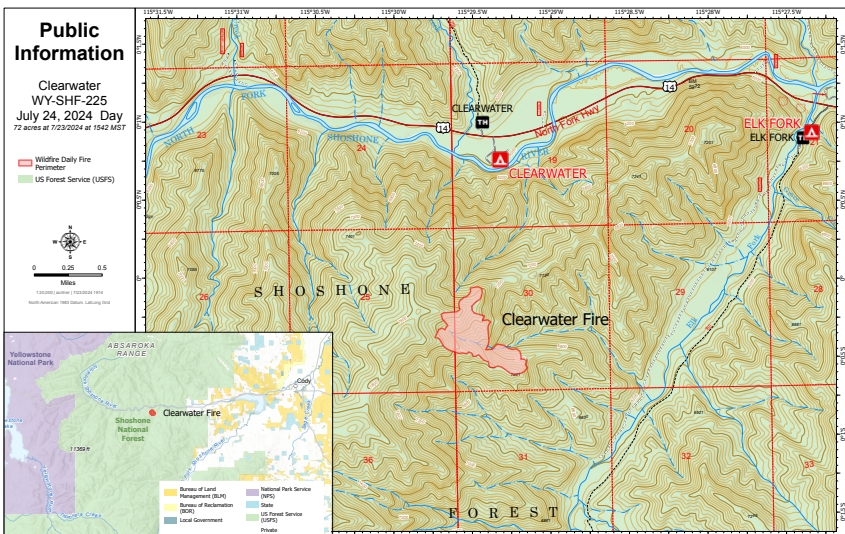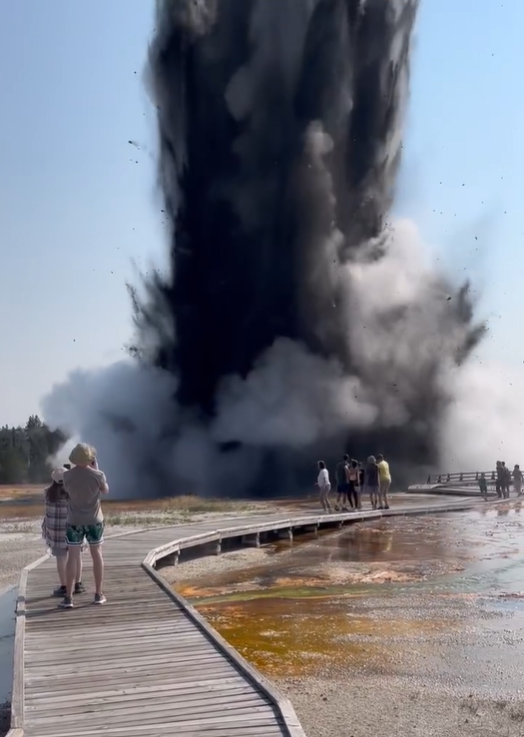Bighorn Basin Reservoir Forecasts Getting Better All the Time
Written by Andrew-Rossi on March 16, 2023
Regional reservoirs are getting plenty of water from this winter’s snowmelt – so much that the Boysen Reservoir is planning an earlier-than-normal flushing flow starting Tuesday, March 28.
The Bureau of Reclamation released the latest snowmelt forecasts for the major reservoirs in the Bighorn Basin. More snow means more snowmelt, which will make the region’s reservoirs full to brimming by summer.
Each report calculates the spring runoff of each river in the Bighorn Basin to determine how full the basin’s reservoirs will be this summer. A reservoir is considered “full” when the pool elevation is at the top of active conservation or joint-use pool. The percentage is based on the total reservoir volume below that level.
The Bureau of Reclamation’s January forecast of the April through July runoff predicted for the Bighorn River Basin is as follows:
Bighorn Lake
- Bighorn Lake is forecast to be approximately 1,283,000 acre-feet (a.f.), which is 104% of the 30-year average of 1,235,000 a.f.
- As of March 1, Bighorn Lake is currently at 79% full.
Buffalo Bill Reservoir
- Buffalo Bill Reservoir is forecast at 700,000 a.f., which is 94% of the 30-year average of 748,300 a.f.
- As of March 1, Buffalo Bill is 72% full.
Boysen Reservoir
- Boysen Reservoir is forecast at 800,000 a.f., which is 131% of the 30-year average of 611,000 a.f.
- As of March 1, Boysen Reservoir is 79% full
Bull Lake Reservoir
- Bull Lake Reservoir from Bull Lake Creek is expected to be 170,000 a.f., which is 118% of the 30-year average of 144,200 a.f.
- As of March 1, Bull Lake Reservoir is 49% full.
The forecasts as of February 1 were 98%, 90%, 131%, and 118%, respectively.

Courtesy Water Resources Data System & State Climate Office
The ferocious snowstorms of February added a significant amount of snow to the Bighorn Basin’s snowpack, which means Summer 2023 won’t be quite as dry as in recent years.
The latest Bureau of Reclamation predictions corresponds with the snow-water equivalent the Wyoming Water Resources Data System & State Climate Office measured. As of March 16, all of northwest Wyoming – and most of the state – has over 100% of its average snowpack.
Because of the anticipated inflow, the Bureau of Reclamation, in collaboration with the Wyoming Game and Fish Department (WGF), has scheduled a flushing flow in the Wind River downstream of Boysen Dam.
“The purpose of the flushing flow is to clean the spawning gravels and improve fish reproduction in the river. The current reservoir content is above average, and the spring runoff is anticipated to be above average,” said Wyoming Area Manager, Lyle Myler. “Reclamation will retime operations and provide the flushing flow with the expectation that excess water will need to be released this spring.”
Starting on the morning of Tuesday, March 28, flows in the river below Boysen Dam will be incrementally increased from approximately 1,100 cubic feet per second (c.f.s.) to 5,000 c.f.s. The 5,000 c.f.s. flow will continue for 10 hours.
Flows will then be incrementally reduced back down to approximately 2,200 c.f.s.

Courtesy The American Southwest
Flows of 5,000 c.f.s. or more in the Wind River below Boysen Dam are not unusual during peak summer snowmelt runoff periods in years of above-average runoff – but the flows will be high for this early in the spring.
Anyone downriver of the Boysen Dam is urged to use caution during this period of rapid fluctuation of flows.




